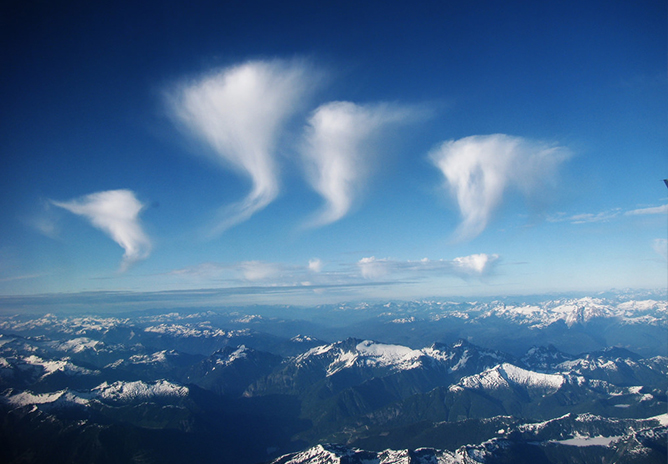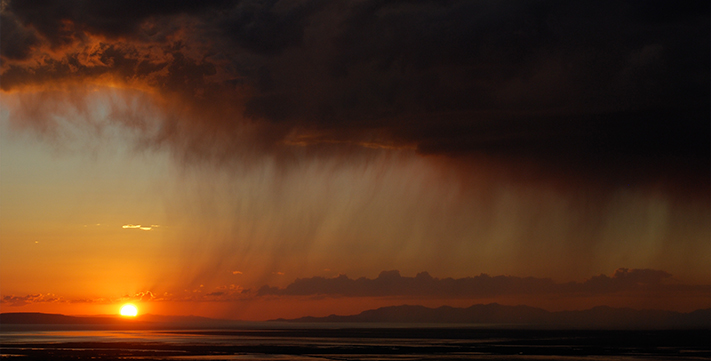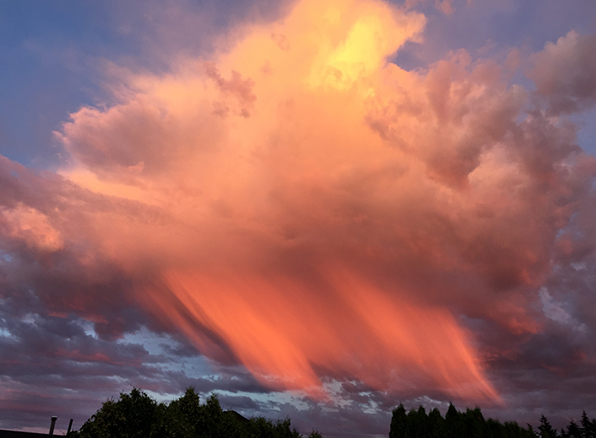What are
Virga Clouds?
Not an official cloud classification but rather a “supplementary feature”, virga form when rain or snow begins to fall but evaporates or sublimates in mid-air. They look like a sky full of floating jellyfish, their dangling tendrils being swept away by the wind.
Virga – meaning literally “shaft” or “branch” – are associated with many different kinds of cloud.
 When attached to the underside of low, gloomy clouds like nimbostratus, they give the impression of the cloud being streaked and smudged towards the ground. The prettiest jellyfish skies occur mostly with high clouds that tend to form individual cloudlets, like altocumulus and cirrocumulus.
When attached to the underside of low, gloomy clouds like nimbostratus, they give the impression of the cloud being streaked and smudged towards the ground. The prettiest jellyfish skies occur mostly with high clouds that tend to form individual cloudlets, like altocumulus and cirrocumulus.
In a storm system, virga frequently precede heavy rains when the air below the cloud isn’t yet humid enough to support full precipitation. As the rain or snow evaporates away, it cools the surrounding air while increasing its humidity, until finally conditions are ripe for rain to pour.

Virga – meaning literally “shaft” or “branch” – are associated with many different kinds of cloud.

In a storm system, virga frequently precede heavy rains when the air below the cloud isn’t yet humid enough to support full precipitation. As the rain or snow evaporates away, it cools the surrounding air while increasing its humidity, until finally conditions are ripe for rain to pour.

